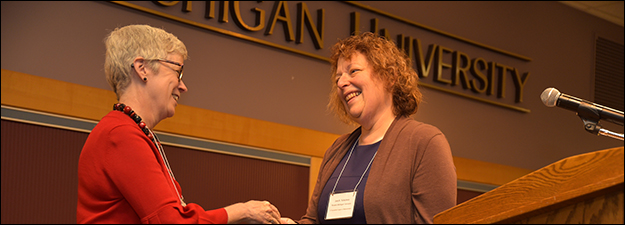Despair in the Middle Ages (A Roundtable)
Sponsoring Organization(s)
Medievalists@Penn
Organizer Name
Mariah Junglan Min, Samantha Pious
Organizer Affiliation
Univ. of Pennsylvania, Univ. of Pennsylvania
Presider Name
Mariah Junglan Min
Paper Title 1
Despair and Confession in Robert the Deuyll and Sir Gowther
Presenter 1 Name
Gina Marie Hurley
Presenter 1 Affiliation
Yale Univ.
Paper Title 2
When "Hope Has Flown": Despair and Decrepitude in the Medieval Love-Lyrics of Baudri de Bourgeuil, Arnaut Daniel, and Francesco Petrarch
Presenter 2 Name
Alani Hicks-Bartlett
Presenter 2 Affiliation
Univ. of California-Berkeley
Paper Title 3
"I get knocked down, but I get up again . . .": Elements of Despair in Late Medieval Religious Literature
Presenter 3 Name
Hetta Howes
Presenter 3 Affiliation
Queen Mary, Univ. of London
Paper Title 4
Despair and False Hope in the Stanzaic Morte Arthur
Presenter 4 Name
Christopher Jensen
Presenter 4 Affiliation
Florida State Univ.
Paper Title 5
Mediating Affect: Linguistic Enclosures of Despair in Julian of Norwich's A Revelation of Love and The Book of Margery Kempe
Presenter 5 Name
Jessica Zisa
Presenter 5 Affiliation
New York Univ.
Start Date
11-5-2017 3:30 PM
Session Location
Fetzer 1040
Description
Despair, in medieval thought, existed at the intersection of a number of discourses. It was at once a theological state defined by the rejection of divine grace; a deadly sin of slothful torpor, when folded into the category of acedia; a melancholia caused by humoral imbalances; and a type of emotional suffering endured by heartsick lovers. From the Wood of Suicides in Canto 13 of Dante's Inferno to the immobilized wretchedness of Troilus in Chaucer's Troilus and Criseyde, from the stale bread of hardship (le pain de dure peine) of René d'Anjou to the allegorical figure of Sloth (Accidie) in Piers Plowman, despair -- which we would define, after Dante, as the abandonment or loss of all hope -- played a significant role in the vernacular literary production of Western Europe as well as in latinate works of religious philosophy and medicine.
This roundtable, sponsored by the University of Pennsylvania working group Medievalists at Penn (hereafter M@P), seeks to cast a wide net and foster a dialogue among scholars whose work addresses such varied facets of despair as a concept. How does the treatment of despair in medieval texts balance and negotiate its manifold registers? What sorts of subjective perceptions of time and space are created through the experience of despair? How does despair work to build up or break down the defining barriers of identity that quarantine the self from the outside world?
Mariah Junglan Min
Despair in the Middle Ages (A Roundtable)
Fetzer 1040
Despair, in medieval thought, existed at the intersection of a number of discourses. It was at once a theological state defined by the rejection of divine grace; a deadly sin of slothful torpor, when folded into the category of acedia; a melancholia caused by humoral imbalances; and a type of emotional suffering endured by heartsick lovers. From the Wood of Suicides in Canto 13 of Dante's Inferno to the immobilized wretchedness of Troilus in Chaucer's Troilus and Criseyde, from the stale bread of hardship (le pain de dure peine) of René d'Anjou to the allegorical figure of Sloth (Accidie) in Piers Plowman, despair -- which we would define, after Dante, as the abandonment or loss of all hope -- played a significant role in the vernacular literary production of Western Europe as well as in latinate works of religious philosophy and medicine.
This roundtable, sponsored by the University of Pennsylvania working group Medievalists at Penn (hereafter M@P), seeks to cast a wide net and foster a dialogue among scholars whose work addresses such varied facets of despair as a concept. How does the treatment of despair in medieval texts balance and negotiate its manifold registers? What sorts of subjective perceptions of time and space are created through the experience of despair? How does despair work to build up or break down the defining barriers of identity that quarantine the self from the outside world?
Mariah Junglan Min

